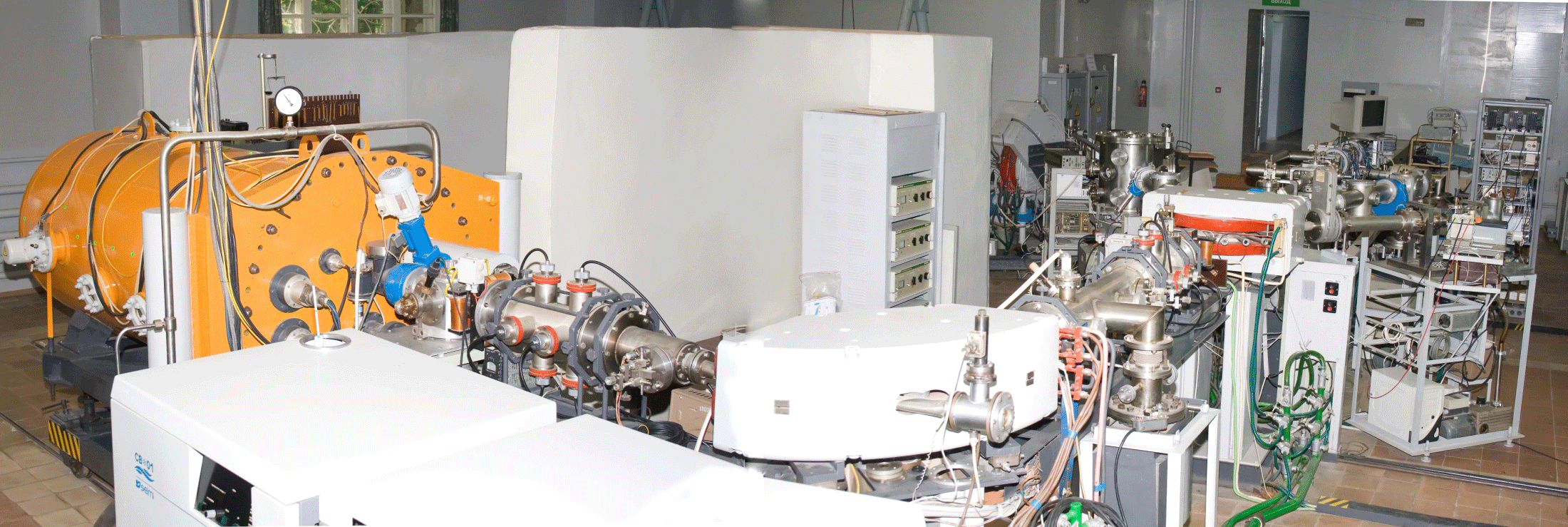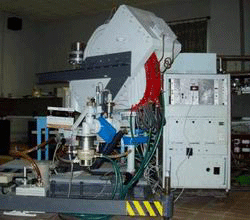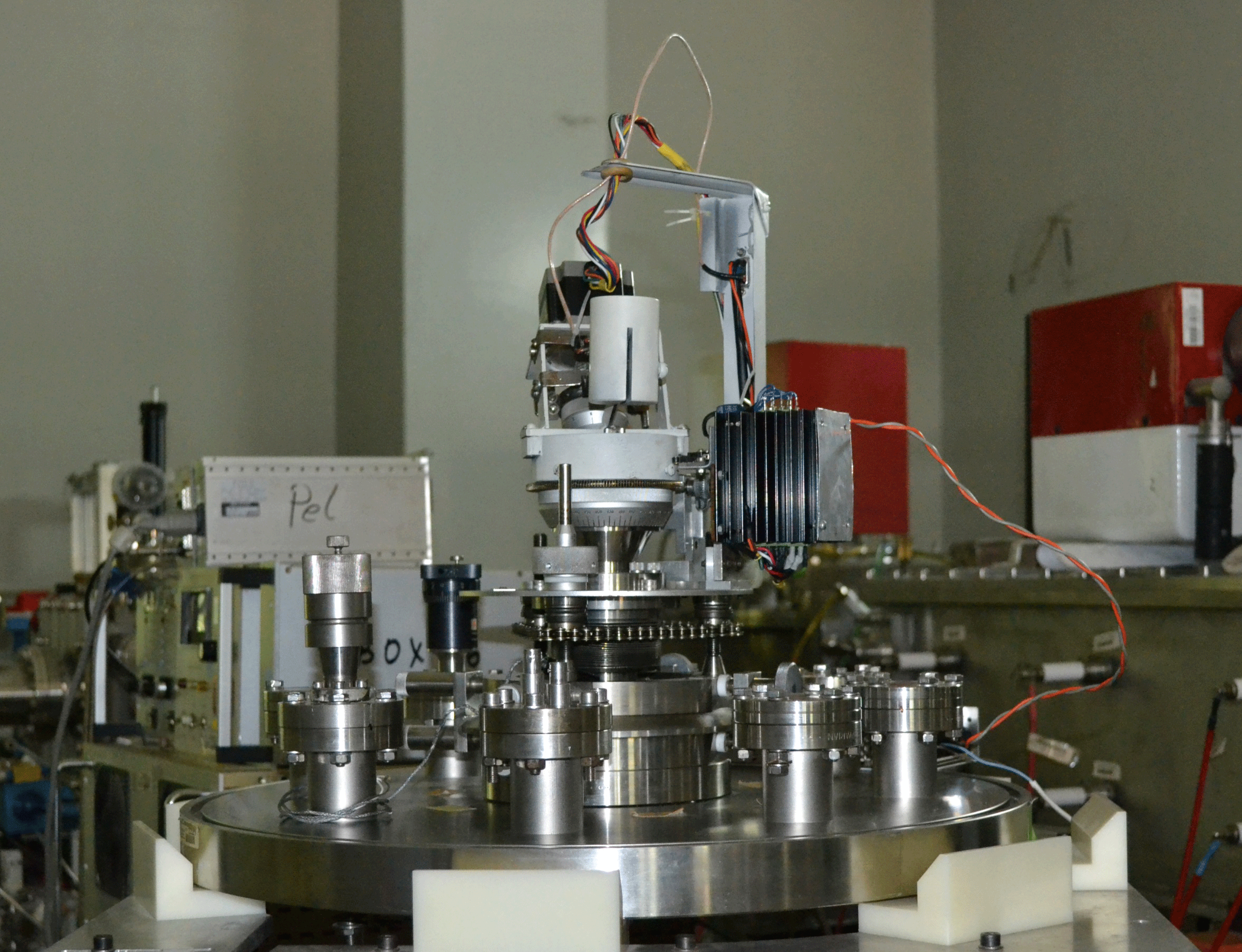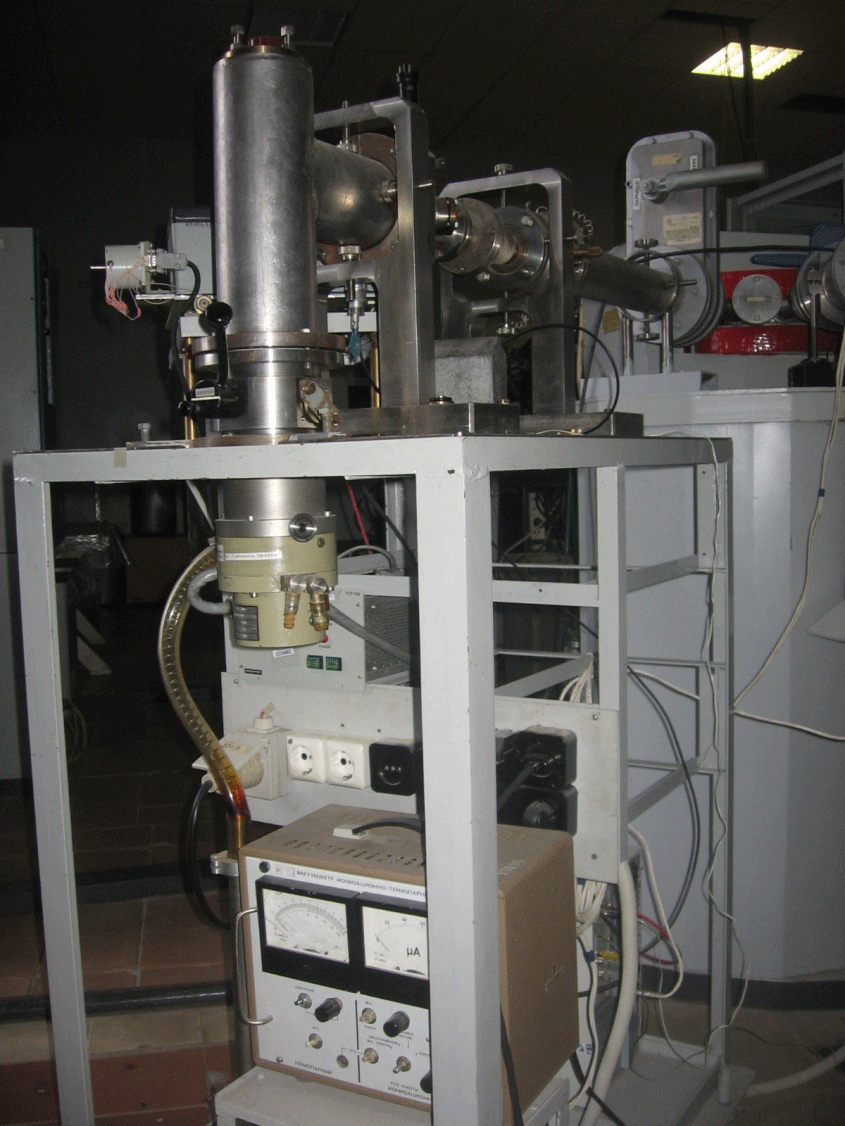|
Analytical accelerator-based facilityAn analytical facility constructed on a basis of a compact electrostatic IAP NASU accelerator allows studying structure and composition of various materials with the Rutherford back-scattering technique, recoil proton detection, resonant nuclear reactions, PIXE, ion lumuniscence.
DescriptionAn analytical facility constructed on a basis of a compact electrostatic IAP NASU accelerator allows studying structure and composition of various materials with the Rutherford back-scattering technique, recoil proton detection, resonant nuclear reactions, PIXE, ion lumuniscence. AAF specifications and methodological support are sufficient for applied and fundamental studies in various branches of science and engineering. Analitical accelerating facility has:
General view of IAP NASU AAF Universal experimental chambers, electrophysical apparatus and software on analytical end-stations AAF provide express research, with high resolution, and with basic and secondary nuclear and physical techniques. Electrostatic AcceleratorAAF is constructed on a base of a compact EA of horizontal “Sokol” type. EA specifications:
During construction and operation of AAF its construction was modified with some refinements. In particular, a high-frequency (HF) ion source was equipped with a system of constant magnets to densify plasma . To prevent emergencies at operation of an accelerator charge transporter, a system of a bend control of a high-voltage column was developed and assembled. A charging system of high-voltage conductor was upgraded to diminish instability of high voltage from a band. A system of X-ray suppression of a compact accelerator was also developed and constructed. Nd-Fe-B constant magnets installed along an accelerating tube decrease a radiation dose by two orders of magnitude. Beam Transport SystemA beam transport system of AAF has a beam monitoring chamber (1), electromagnetic correctors of a beam trajectory (2), two doublets of quadrupole electrostatic lenses (3), a magnet analyzer (4), inlet and outlet slit of a magnet analyzer (5, 6), inlet slit of a distribution magnet (7), a distribution magnet (8), vacuum suction system (9) with vacuum valve (10). At the outlet slit of a distribution magnet the beam transport system provides a proton current up to 5 μA with energy stability at least 0.08-0.1%. Beam size is within 5x5 mm. Vacuum in the system is provided by a vacuum suction system of a two-stage scheme. A fore-vacuum is created by LEYBOLD-HERAEUS D16A fore-vacuum pumps with a 7.5 l/sec. delivery. High vacuum is maintained with the EYBOLD-HERAEUS TURBOVAC 450 turbo-molecular pumps with 450 l/sec. delivery and an ion pump Nord-400. An evacuating system provides vacuum at least 10 4 ÷10 5 Pa within 20-30 min in ion guides. Analytical End-StationsIAP NASU AAF has five analytical end-stations: a scanning ion microprobe end-station (SIM), a Rutherford back-scattering end-station (RBS), a nuclear recoil end-station (NR), a nuclear reaction end-station (NR), and an ion luminescence end-station (IL). All the accessories on these end-stations were developed and constructed during past ten years by researchers and experts of IAP NAS of Ukraine. A distinctive feature of AAF is in three unique analytical end-stations meeting with world standards parameters. Specifications of these facilities are given below.
General view of a scanning ion microprobe SIM specifications:
Rutherford Backscattering End-Station The end-station is equipped with a magnet spectrometer registering energy of elastically scattered particles with a 3÷4 keV resolution. It allows studying the films with thickness from some nanometers to some microns.
General view of the RBS end-station Determination: study of a structure and composition of film coatings of constructional materials. RBS specifications:
Elastic Recoil Detection Analysis Spectrometer Determination: non-destructive qualitative analysis of hydrogen concentration in materials on the basis of nuclear recoil method. Apart from that the end-station may be applied for RBS technique both at reverse and sliding angles (for the RBS technique a Н+ accelerated beam is possible). Specifications of Nuclear Recoil End-Station:
Functionally, a nuclear recoil end-station consists of an ion guide, a scattering chamber, and an electrostatic spectrometer. The ion guide is equipped with a vacuum suction system providing a 10-6Pa vacuum, and a beam monitoring system. An interaction chamber is a Varian VT 118 chamber. It is equipped with a mechanism of target moving and a vacuum suction system providing a 10-7Pa vacuum, preventing organic contamination of the samples under study. Ultrahigh vacuum in the chamber is maintained by a seven stage ion vacuum pump in the chamber, a sublimation vacuum pump, and a “nitrogen trap”. A special mechanism moves the targets in the coordinates within a 10 microns accuracy and yaws them around a vertical axis by 360° within a 0.5° accuracy. The scattering chamber construction makes it possible to turn it around a vertical axis by angles from 0° to 135°. It allows experiments on both small-angle and back scattering. Accessory equipment is also possible to install (including detectors of charged particles, of characteristic X-rays, and of gamma-radiation). A special feature of the end-station is a precisious electrostatic spectrometer with energy resolution ΔE/E of 1.5×10-3. The spectrometer is equipped with a position sencitive detector, an automated control system of data acquisition. The equipment was supplied to IAP NAS of Ukraine by Max-Plank-Institute for Metals Research, Stuttgart, Germany.
General view of an electrostatic spectrometer in a nuclear recoil end-station. The end-station is also applied for studying impurities and defects with a charged particles channeling technique. A lid with an automated goniometer is fixed onto the scattering chamber. The goniometer has five degrees of freedom (two rotation degrees and three translational degrees). Rotational degrees are automated with a stepping motor controlled by a computer. A step of the target moving is 0.01. It allows angle scanning in vicinity of crystal axes chosen. Translational degrees of freedom are used for a sample positioning and are manually controlled. A system of experiment automatization and data acquisition is based on a universal computer appliance (UPAK) developed at IAP NAS of Ukraine, consisting of a set of sensors, a module for registration and data transition, a network switch, a control module, and a device for visualization and data analysis, i.e. a personal computer and a special software, in general.
General view of a lid of a scattering chamber with an automated goniometer Ion Luminescence End-Station Determination: identification and characterization of non-organic materials; study of X-ray damages. Specification of the ion luminescence end-station:
General view of an ion luminescence end-station
Division: Department of nuclear and physical research The last update date: 29.04.2015
|
Annonce On December 22, 2021, the National Academy of Sciences of Ukraine announced a competition to replace the director of the Institute of Applied Physics of the National Academy of Sciences of Ukraine. According to the Statute of the NAS of Ukraine, the right to nominate candidates for the position of director of a scientific institution has: the Presidium of the NAS of Ukraine, the Bureau of the relevant branch of the NAS of Ukraine, members of the NAS of Ukraine, the Academic Council of the institution. A candidate for the position of director of a state scientific institution must be fluent in the state language, have a doctorate or doctor of philosophy and work experience as a researcher and (or) research and teaching staff of at least 10 years. Institute Research Training of scientific personnel |






